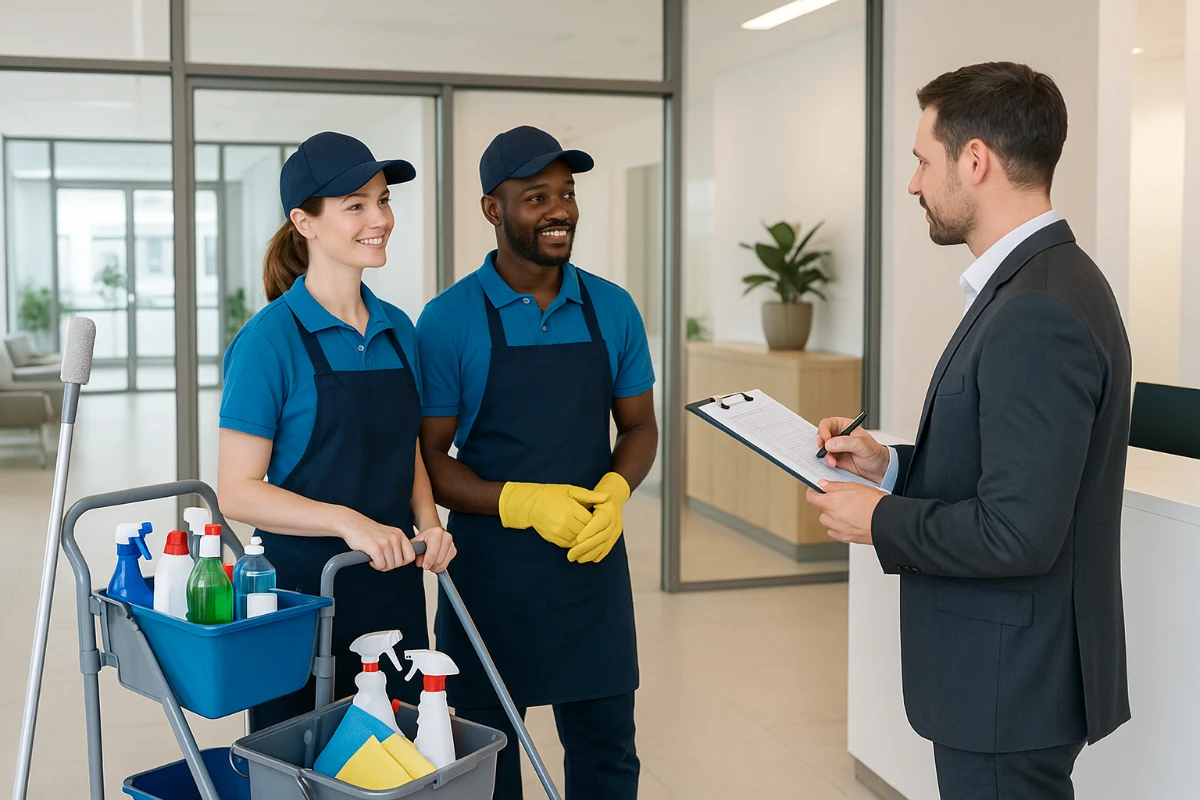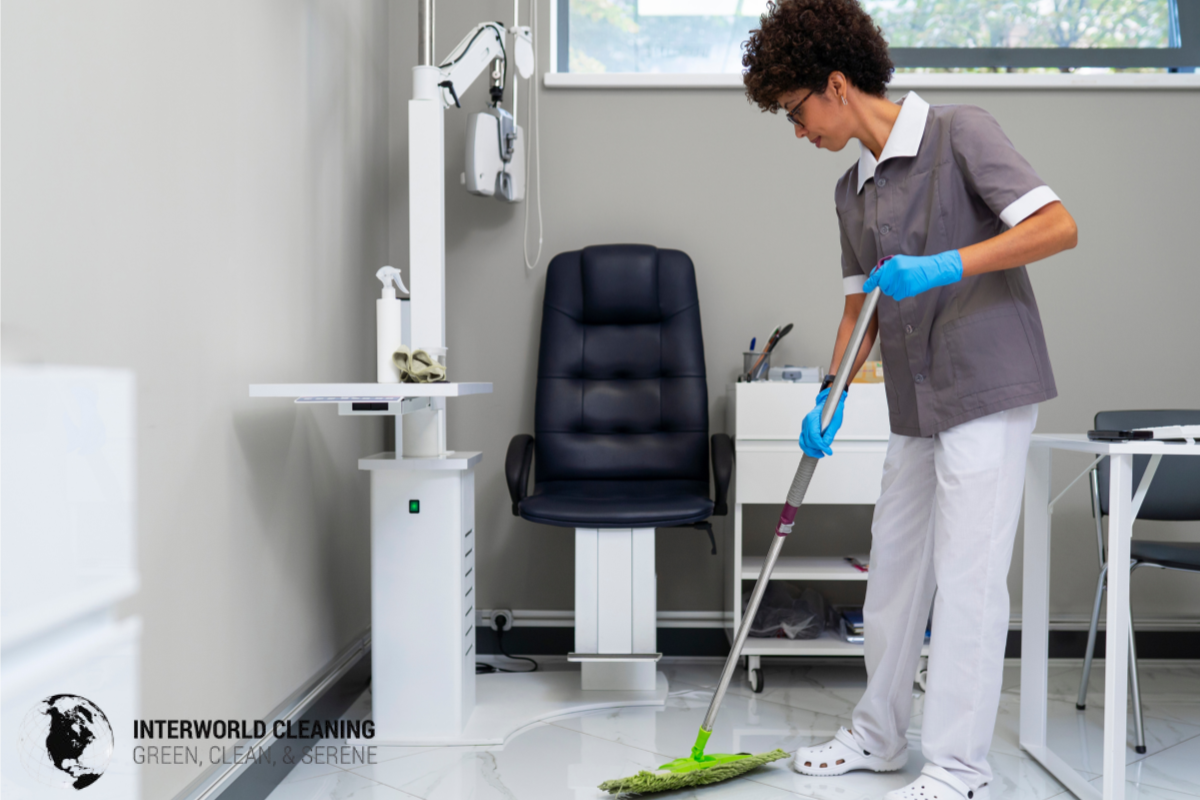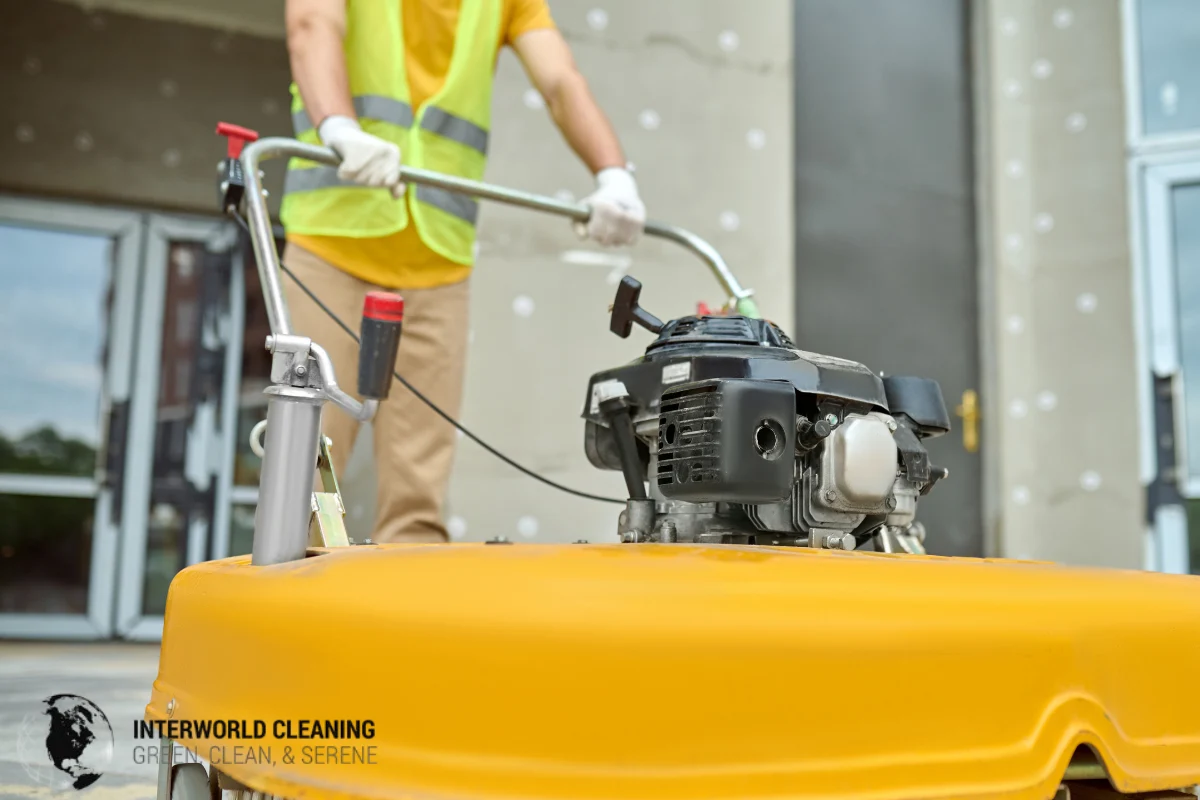Running a kitchen isn’t for the faint of heart. Between rush hours, staff changes, and food deliveries, it can get chaotic fast.
And when things get busy, cleaning often slips down the list. But here’s the truth, no restaurant survives long without a solid commercial kitchen deep cleaning routine.
Grease builds up in places you didn’t even know existed. Floors get sticky, hoods collect grime, and suddenly your “clean” kitchen smells like old fryer oil. If that sounds familiar, this guide is for you.
At Interwold Cleaning, we’ve seen it all, From spotless prep rooms to kitchens that could scare off a health inspector in five seconds flat. So let’s talk about how to deep clean your kitchen step by step, without losing your mind.
Why Deep Cleaning Really Matters
Think of daily cleaning as brushing your teeth. Deep cleaning is the dentist appointment. You can skip one, but not both.
Surface cleaning looks fine at first glance, but bacteria and grease don’t care what’s visible. They hide in vents, under fryers, and behind fridges. Leave it long enough, and you’ll get mold, pests, and foul odors that cling to everything.
A deep clean keeps your staff safe, your food tasting right, and your reputation intact. Nobody wants to hear customers say, “Something smells off.” you can trust us, one bad review about cleanliness spreads faster than a lunch rush.
How Often Should a Commercial Kitchen Be Deep Cleaned?
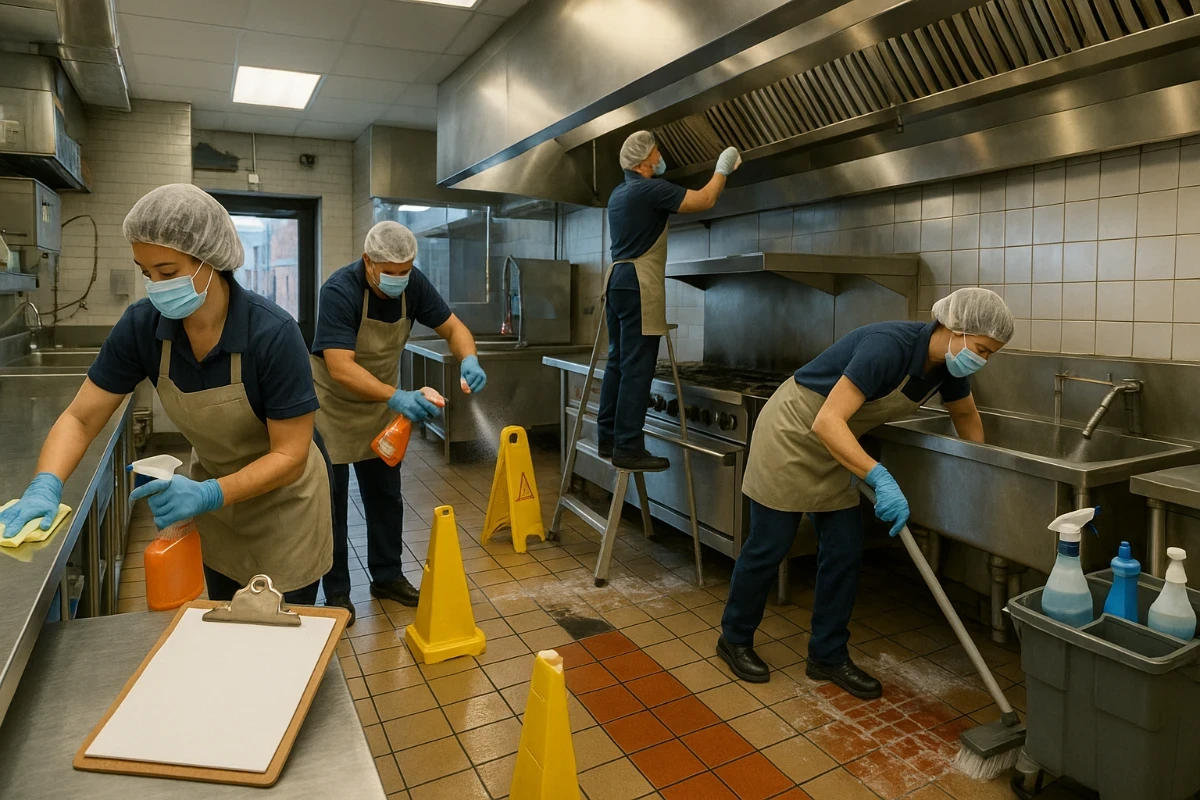
There’s no single rule. It depends on how much you cook and how messy your operation gets. But here’s a decent starting point:
Every day: wipe downs, sweeping, sanitizing prep areas.
Every week: degrease stoves, clean appliances, scrub floors.
Every month (or quarter): full commercial kitchen deep cleaning, hoods, vents, drains, walls, ceilings, everything.
If you’re serving hundreds of meals a day or cooking greasy food, aim for once a month. In Baltimore, many restaurant owners book regular commercial cleaning services just to stay on top of inspections.
The Commercial Kitchen Cleaning Checklist
Every professional commercial cleaning company follows some version of this list. It’s not glamorous, but it gets the job done.
Cooking Equipment
Take apart and scrub the range hoods, filters, and vents.
Degrease ovens, fryers, and grills, inside and out.
Empty and clean grease traps.
Polish stainless steel so it shines again.
Fridges and Freezers
Remove all food, toss expired items.
Wash shelves, drawers, and walls with warm soapy water.
Clean rubber seals (they trap grime fast).
Defrost if there’s ice buildup.
Prep Areas
Sanitize cutting boards, knives, and counters.
Disinfect sinks and faucets.
Wipe down shelves and storage bins.
Floors and Drains
Sweep, mop, then scrub with degreaser.
Don’t forget corners and behind heavy gear.
Clean drains and pour sanitizer to prevent odor.
Walls, Ceilings, and Lights
Wipe off grease splatters and dust.
Clean vents and replace burnt bulbs.
Small Appliances
Unplug them first. Then clean mixers, blenders, and toasters.
Check cords and attachments for wear or residue.
If you follow this commercial kitchen cleaning checklist, you’ll already be miles ahead of most restaurants.
Step by Step: How to Deep Clean a Commercial Kitchen
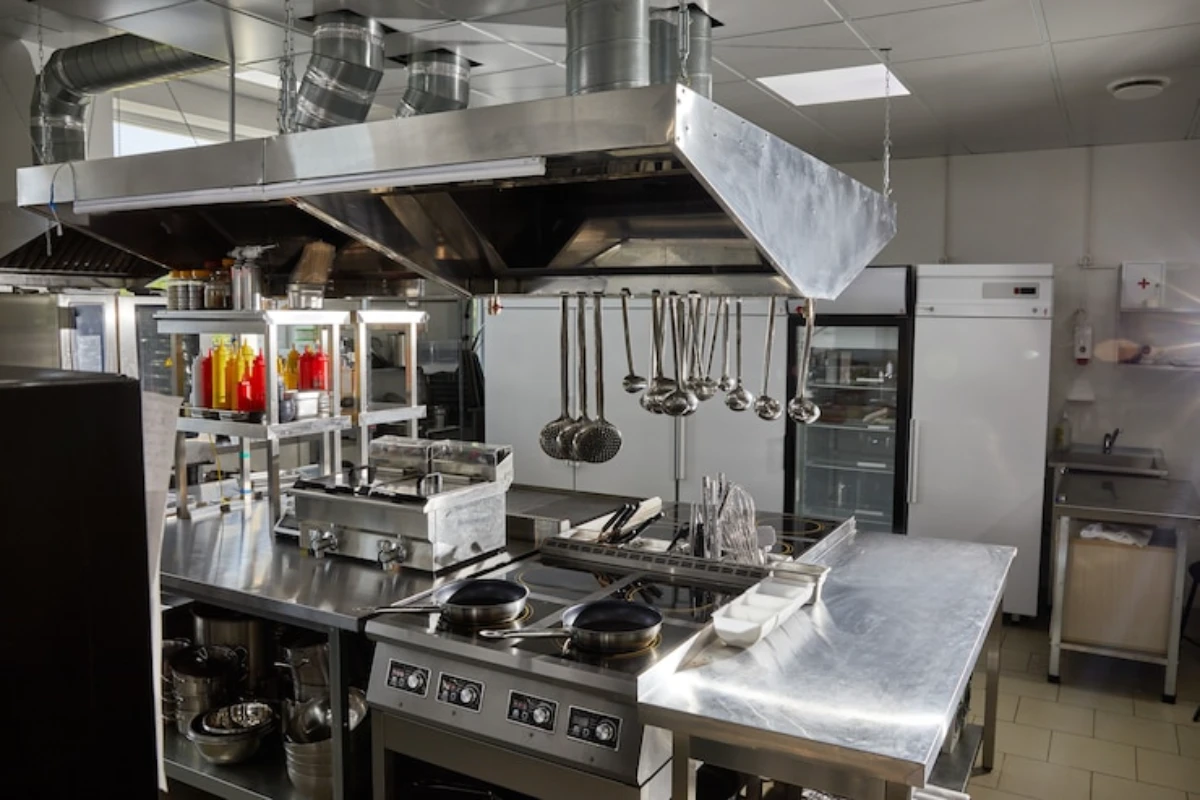
Now for the meat of it. Here’s how we at Interwold Cleaning approach a full kitchen deep clean.
Step 1:
Power Down Everything
Safety first. Unplug or shut off gas lines. Never clean hot or powered equipment.
Step 2:
Clear Out Food and Trash
Empty every fridge, drawer, and bin. Toss expired food and old containers. You can’t clean properly if there’s stuff in the way.
Step 3:
Spray and Soak
Apply degreaser on hoods, vents, and stoves. Let it sit. Rushing this step is the number one mistake people make, let the product do the heavy lifting.
Step 4:
Scrub Surfaces
Scrub every inch, counters, walls, shelves, and sinks. Hot water and elbow grease go a long way.
Step 5:
Clean Equipment
Disassemble what you can. Wipe burners, trays, and fryer baskets. Dry them completely before reassembling.
Step 6:
Floors and Drains
Sweep first, then mop with degreaser. Scrub near walls and corners. Rinse, disinfect, and finish with floor sanitizer.
Step 7:
The Final Touch
Polish the metal, replace filters, check vents, and inspect lighting. A kitchen should feel fresh when you’re done.
Step 8:
Walkthrough
Take a slow look around. Missed a spot? Go back. There’s always something small hiding under a counter.
When you’ve done all that, you’ve completed a professional level restaurant deep cleaning guide session.
When It’s Time to Call the Pros
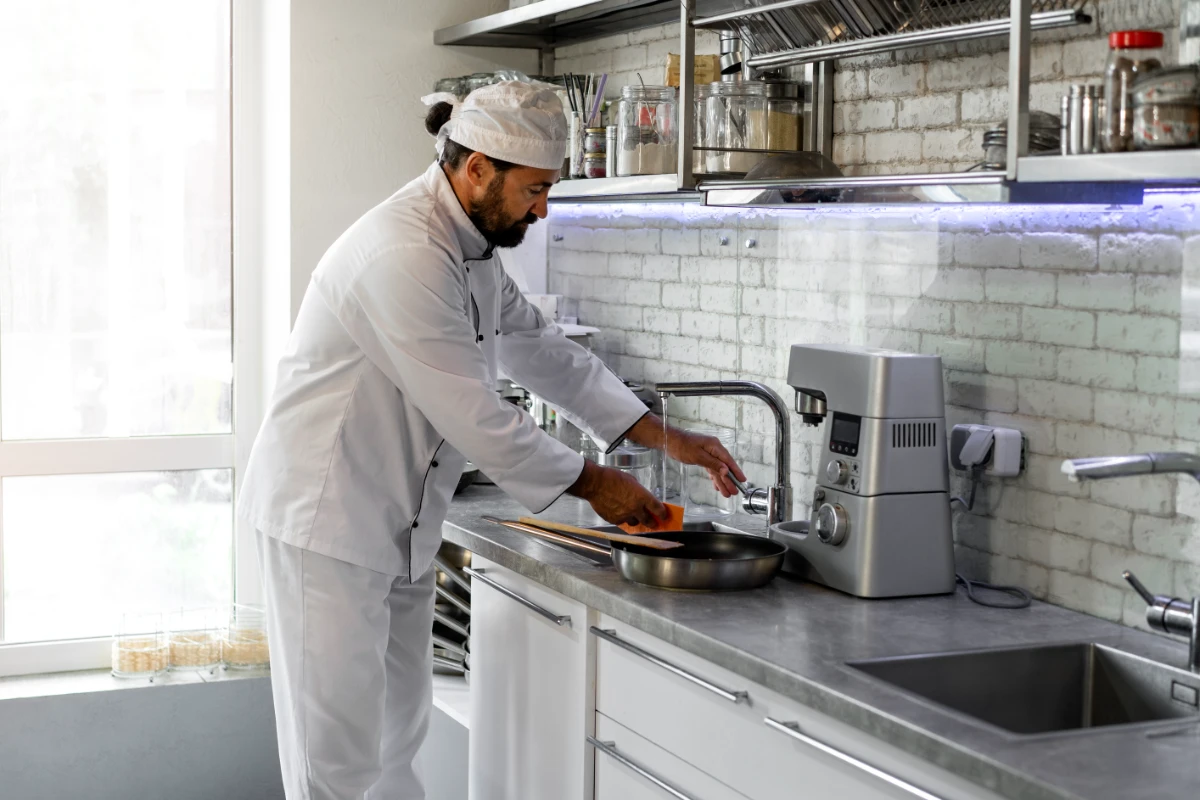
Let’s be honest: some kitchens need more than just “a good scrub.” If grease has built up for months or the hoods look like tar pits, it’s time to bring in a commercial cleaning company.
At Interwold Cleaning, our team handles deep cleans that regular staff shouldn’t have to. We use industrial grade tools, safe degreasers, and techniques designed for food service environments.
Our commercial cleaners:
Remove buildup in hoods and ducts (critical for fire safety).
Sanitize prep surfaces and drains.
Handle hard to reach spots behind equipment.
Ensure everything meets health inspection standards.
We also work around your hours, early morning, late night, weekends. Most of our Baltimore clients barely notice we’ve been there, except for the smell of lemon cleaner and gleaming floors the next day.
What Happens During a Professional Deep Clean
Here’s a quick look at how a pro team does it:
Inspection:
Check kitchen layout, problem areas, grease buildup.
Prep:
Cover equipment, disconnect power, prep chemicals.
Degreasing:
Heavy duty spray and scrape on vents, ducts, and cooktops.
Sanitizing:
Use food safe disinfectants everywhere.
Detail Cleaning: Hand scrub tiles, edges, and fixtures.
Final Review:
Walkthrough with the manager to make sure nothing’s missed.
Depending on kitchen size, it takes 4–8 hours. But the peace of mind afterward? Worth it.
Keep It Clean Constantly
Deep cleans are great, but consistency is everything. Make a simple daily routine your team can stick to:
Wipe spills right away.
Empty trash and grease traps daily.
Label food and throw away expired stock.
Run a quick weekly cleanup using the checklist above.
It’s a lot easier to stay clean than to catch up later.
Need Help? Call Interwold Cleaning Experts!
If your kitchen needs more than a quick mop and wipe, call Interwold Cleaning. We handle everything, from one time deep cleans to scheduled maintenance.
Our goal isn’t just to make your kitchen shine; it’s to help your business run smoother. We’ve helped restaurants, cafés, and hotels across Baltimore meet and exceed health inspection standards.
You cook, we clean. Simple as that.
Call Interwold Cleaning today and get your commercial kitchen deep cleaning done right the first time.
